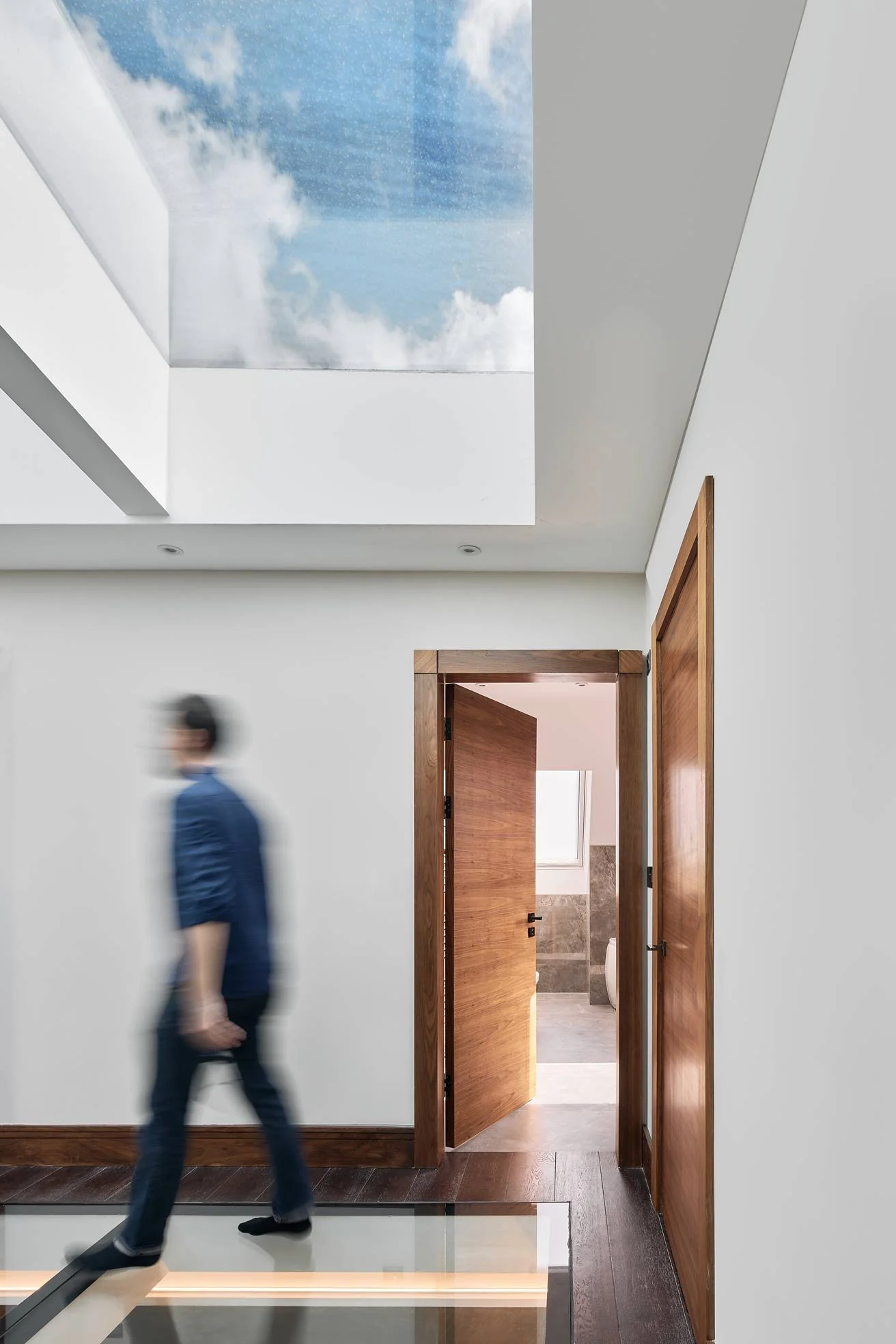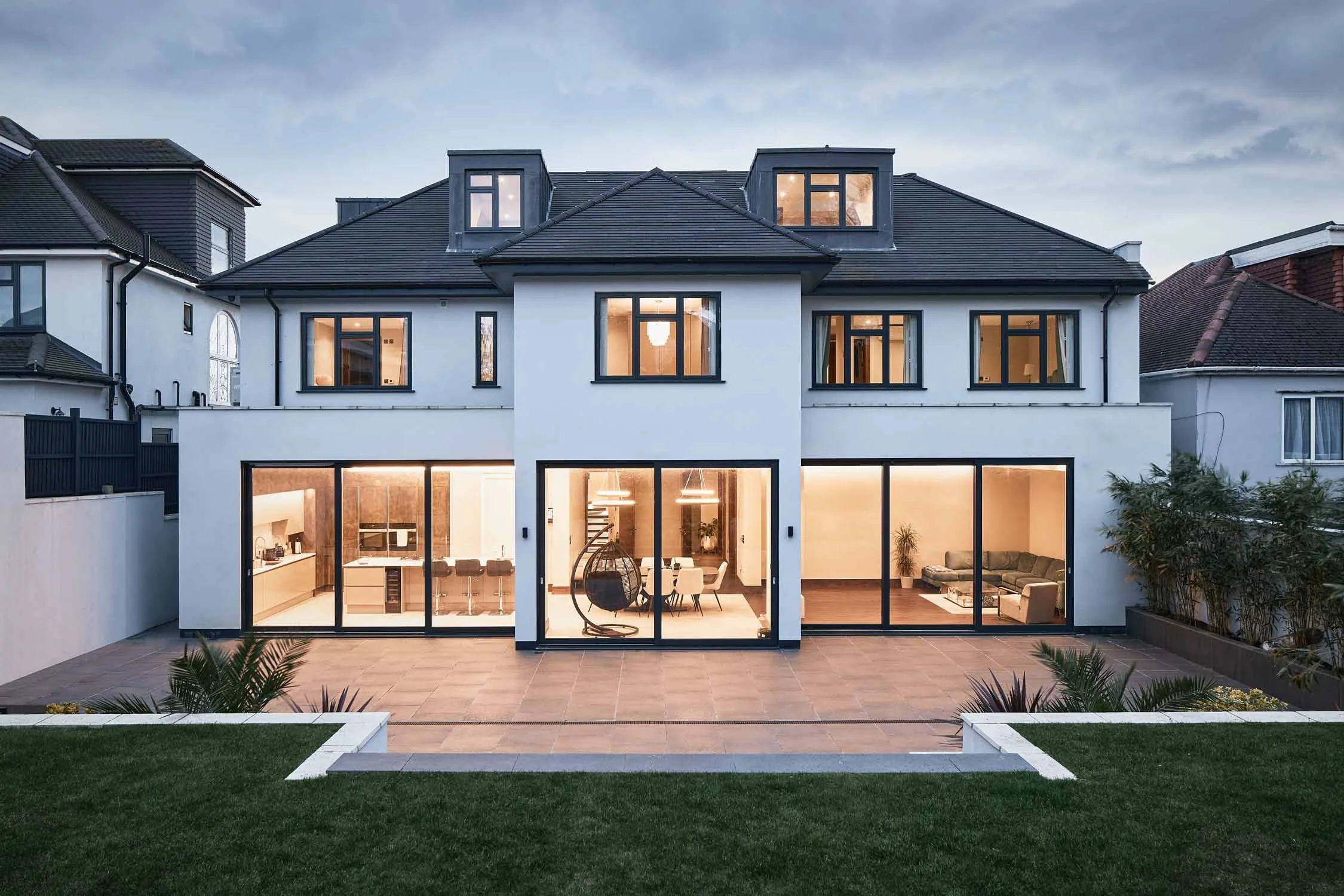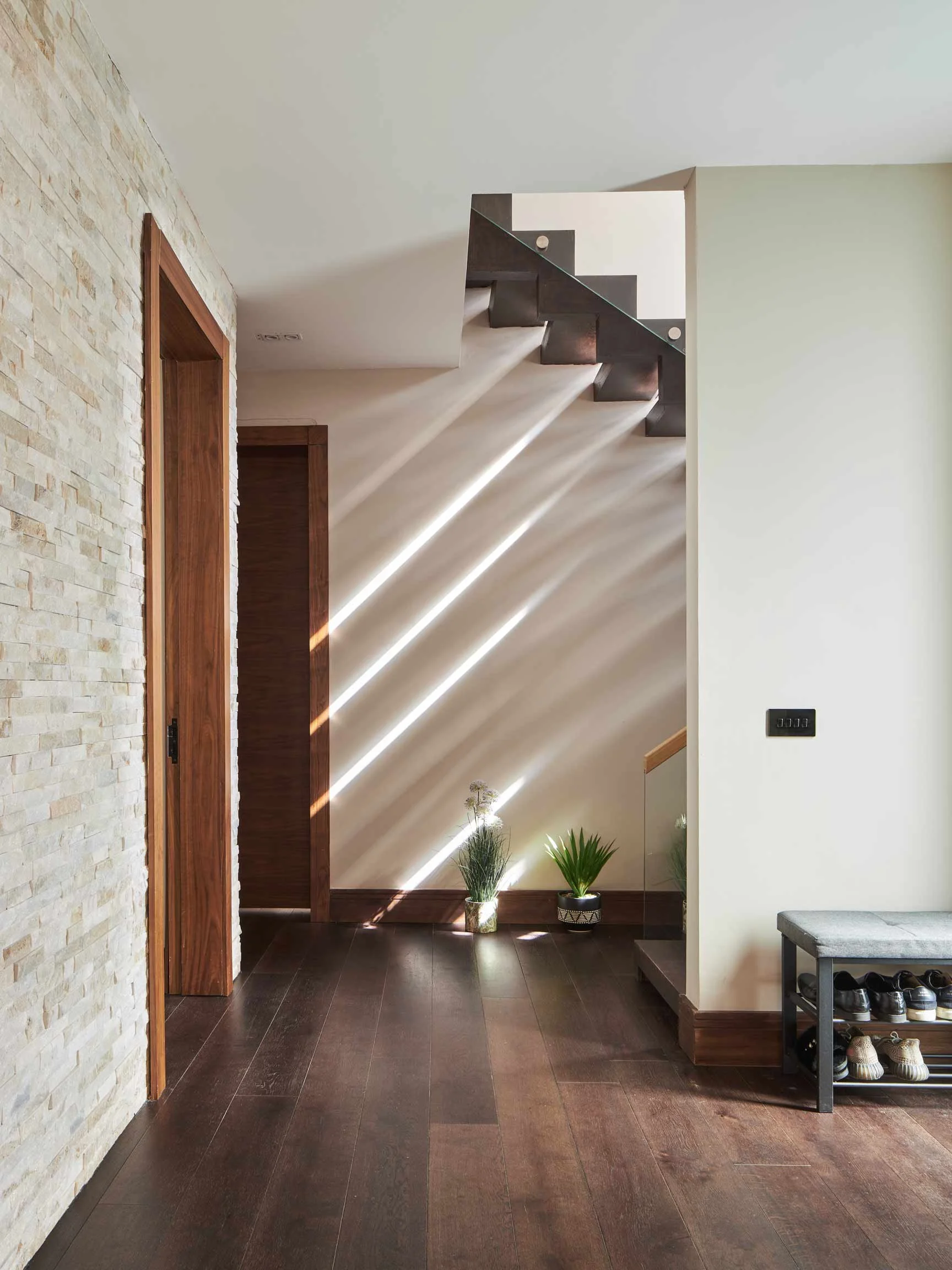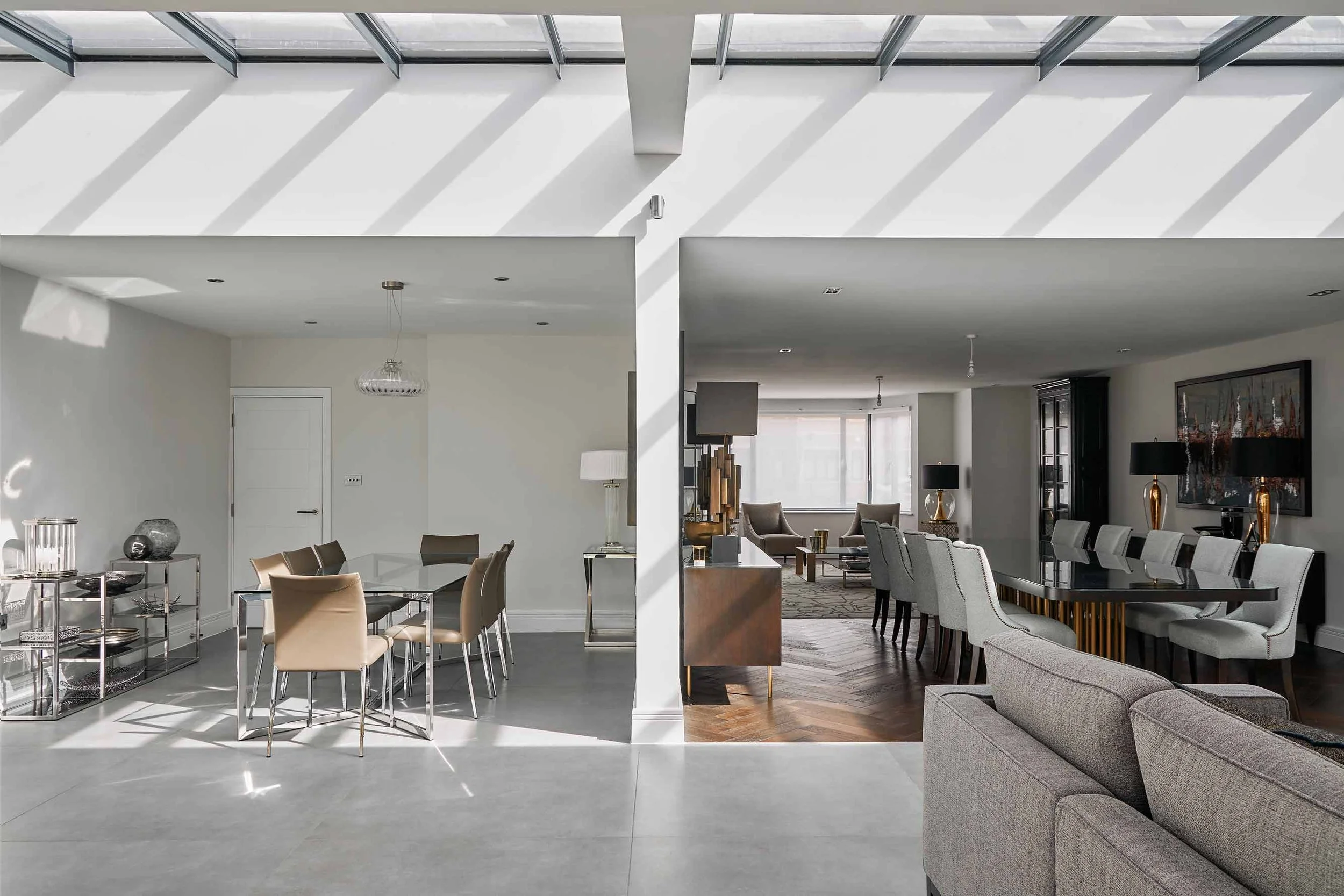The Art of Designing with Natural Light
A glazed void sends light right through the house from top to bottom.
Natural light is more than just a design element; it’s a vital component of our well-being. The way we incorporate light into our homes can significantly impact our mood, productivity, and overall health. Here are some effective ways to bring light into your living spaces and the importance of doing so thoughtfully.
The Importance of Natural Light
Natural light is essential for our well-being. It helps regulate our circadian rhythms, boosts mood, and can even improve productivity. A well-lit space can make a home feel more inviting and alive, while also promoting a healthier lifestyle. A lot of people love feeling a connection with their outdoor spaces through carefully placed glazing. Small details such as a casual windowsill seating next to a low, large window can give you a bright place to read but also connect you to a natural light source. As Louis Kahn said:
Architects in planning rooms today have forgotten their faith in natural light. Depending on the touch of a finger to a switch, they are satisfied with static light and forget the endlessly changing qualities of natural light, in which a room is a different room every second of the day.
Ways to Get Light Into Your Home
Looking at how and where natural light enters your home throughout the day can give you the best use of planned spaces.
Orientation Matters: Large windows and skylights are the most direct ways to invite natural light indoors. They can transform a dark room into a bright, welcoming space and the direction your windows face plays a crucial role in the type of light you receive:
- South-Facing: These windows are well-lit throughout the day but be mindful that this positioning can lead to excessive heat indoors.
- North-Facing: This positioning provides consistent, even light without direct sunlight, perfect for art studios or reading nooks and for keeping the heat down on a blazing hot day.
- East and West: East-facing windows capture the gentle morning light, while west-facing ones offer warm evening rays, creating different atmospheres throughout the day.
Looking at how and where natural light enters your home throughout the day can give you the best use of planned spaces, especially when considered alongside the daily cycle of its’ occupants.
Contrast of Light and Dark: A balance between bright and darker spaces can enhance the overall ambiance. Bright areas can evoke a sense of freedom and cleanness, while darker, cosier spaces are perfect for more intimate gatherings or movie nights.
Large windows and skylights are the most direct ways to invite natural light indoors. A balance between bright and darker spaces can enhance the overall ambiance.
Playfulness of Light: You can incorporate elements like stained glass windows or use dappled light through trees to create a dynamic and engaging environment. You can use carefully placed natural light sources to cast playful shadows as the light naturally shifts throughout the day and evening. High and low light contrasts can also add depth and interest to your home.
Carefully placed natural light sources can cast playful shadows.
Sun Tunnels: Sun tunnels are an innovative solution for bringing natural light into spaces that may lack direct access to windows. These tubular devices capture sunlight from the roof and channel it down through reflective tubes into the interior of the home. Sun tunnels are particularly beneficial in smaller rooms, hallways, or bathrooms, where traditional windows may not be practical. They provide a cost-effective and energy-efficient way to brighten up a space, making it feel more open and airy.
Clerestory Windows: Clerestory windows are glazing installed high up on walls, typically near the roofline, allowing natural light to flood into a room while maintaining privacy. This design is especially effective in areas with high ceilings as it illuminates the room without sacrificing wall space. Their strategic placement can create a dramatic effect, making the space feel larger and more connected to the outdoors.
Clerestory windows are glazing installed high up on walls, typically near the roofline.
Obscured Glazing: Obscured glazing is a practical solution for areas where privacy is a concern, such as bathrooms or bedrooms. This type of glass allows natural light to enter while obscuring visibility, ensuring that personal space is maintained. By incorporating obscured glazing, homeowners can enjoy the benefits of natural light without compromising their privacy, creating a comfortable and serene environment.
Borrowed Light: Sometimes the inner parts of a house are hard for light to reach. Light needs to pass through other rooms in order to reach these central locations. However, the concept of borrowing light from adjacent rooms works because our human eyes are incredibly sensitive to even the lowest levels of light. Which means light that filters through other rooms can still make a significant impact.
The sense of light filtering through a building can be incredibly powerful.
Internal windows or glass floors can bring light from above into a location which would otherwise have to be artificially lit. The sense of light filtering through a building can be incredibly powerful and produce the most incredible diffuse lighting patterns as it touches the walls and other surfaces within the home. Sometimes the unexpected nature of seeing this light can provide a moment of surprise and joy in an otherwise darkened space.
Finding the Right Balance
While flooding a space with light can be appealing, it’s not always the best approach. Overly glazed areas can potentially be baking hot during the day and feel cold and unwelcoming at night. Striking a balance between light and dark spaces is key to creating a comfortable environment.
At SHA, we take the issue of well-lit spaces very seriously. We have software to conduct our own lighting studies which we do on the majority of our projects. This ensures that our designs not only enhance the quality of life for occupants but also consider the impact on neighbouring buildings. We aim to create spaces that are friendly, inviting, and filled with sufficient daylight throughout the building. At night, as the light naturally lowers, spaces can be thoughtfully lit to compensate for the darker evenings, creating a cosy area for people to come together, or a warmly lit nook for some quiet time.
When considering the design of windows, the choice between glazing bars and undivided glass panels can significantly impact both aesthetics and ambiance. Glazing bars, which divide the glass into smaller sections, can create a charming, traditional look while also casting dynamic shadows that shift throughout the day, adding a layer of visual interest and beauty to a space. These changing patterns can enhance the atmosphere, creating a sense of warmth and character as the light interacts with the divisions. In contrast, sheer expanses of undivided glass panels offer a modern, minimalist appeal that maximizes views and natural light. However, this openness can sometimes feel daunting or bare, lacking the intricate detail and depth that glazing bars provide. Both styles bring different qualities to a space, so it depends on the desired aesthetic and the feel one wishes to evoke within the space.
Glazing bars, which divide the glass into smaller sections, can cast dynamic shadows that shift throughout the day, adding a layer of visual interest and beauty to a space.
Thoughtful integration of natural light can transform your home into a sanctuary; a place that can be naturally partitioned using light and dark. By considering orientation, balance, and some playful elements, you can create a space that is not only beautiful but also nurturing for the soul. Spaces that give you a different feel throughout the day as light enters, moves around the building and then leaves again at the end of the day.







